The creation of value as the cornerstone of a company
How important is it for a company to establish a distinctive identity and image when it is on the verge of breaking into the market or, if it is already trading on that market, is seeking to improve its reputation?
This issue of a corporate identity in general, and I would say with wine production in particular, is central, decisive and complex. That’s why it has to be approached with real diligence, as with every question that contains the solution in the answer. Each wine company is first and foremost a story - the more effective the story, the more credible it is.

And what gives it its credibility?
A number of factors, above all the central figure, the personality, the charisma of the owner, what we in the marketing world call a company’s testimonial. Obviously, charisma is like character, if you don’t have it, you can’t inject it intravenously.
Nevertheless, your initial question is one that has to be asked at the start of the story of any company and which must continue to be asked throughout its development. I’m referring to that very special feeling that is created between the company testimonial and the company itself. A feeling sometimes so encompassing that the testimonial becomes the company itself. When it’s no longer there, the problem arises as to how to replace it.
From where does this identity spring, then?
Without doubt, from the figure of the entrepreneur, but that’s not the whole story. In truth, it’s the outcome of the combination of various factors. Forgetting that, above all, identity is about territory is extremely dangerous (wine is, first and foremost, about the land from which it comes). I don’t say this lightly - the land of origin is decisive in creating coherence and credibility in the figure who represents it. Not just that: protecting the land is the responsibility of the entrepreneur, a responsibility that goes beyond business, it takes on a social aspect, that’s to say, there’s “cross-fertilisation”. It brings advantages to the company and to the collectivity, and every businessperson must take account of the needs of the collectivity. What we marketing folk refer to as a company’s mission.
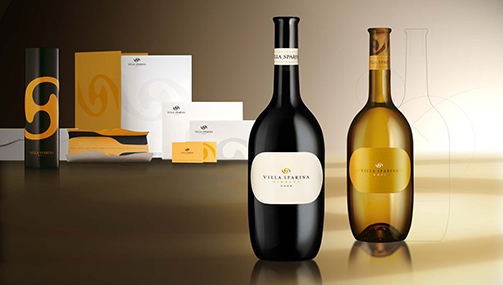
What is a mission, exactly?
One of the great objectives of the (wine production) entrepreneur is shaping the land and, at the same time, his own identity. That’s exactly what the history of viniculture, Italian or otherwise, has done. If we think of the hills and the vineyards of so many regions, we can see that the owner of the company has actually been the architect of the landscape. Very often, much of this landscaping has endured, I won’t say integrated within the tradition, but cared for, brought to fruition through the care of companies, and this represents a market success.
I certainly don’t believe the contrary, that a company succeeds irrespective of the land.
This sounds to me like a rather lively debate.
So it is. And how. It encourages producers to ask themselves, for example, whether to adhere to the classifications, or – because they are dissatisfied, suffocated – whether to leave them behind.
This aspect cuts to the heart of the relationship between the company brand and the collective brand and, once again, we are entangled in the problem of identity. I say that the two brands make a perfect marriage because they meet equally essential needs.
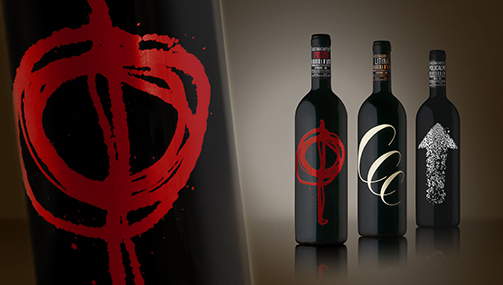
A question about the transfer between generations. In Italy, wine making has a long production history but only recently did it really engage with the business culture. In recent years, we have been witnessing the first real hand-overs of businesses from one generation to another, and this is proving to be a very sensitive issue. You’ve said that the original entrepreneur is a point of reference for a company, but what has to be done to avoid losing the heritage that was created?
I’m a professor and so the “generational passage” is something I deal with all the time – I live it, I experience it. Sometimes I find myself taking an active role in certain family situations.
On this issue, I feel optimistic, almost to the point of naivety, and I’d like to say this from the heart: I am witnessing an extraordinary new generation. While it’s true that the ownership of Italian wine companies is recent, it arose from a paltry business culture. The success is almost miraculous. I say that with great respect, let’s be clear, for the owners and for those who created global success from nothing.
But on what is this success founded?
Obviously not on the “fundamentals” of the economy. On paper, we often see the figures have been really very weak in proportion to the results obtained. Nevertheless, companies have not only grown but become really successful, and this is probably because of a combination of circumstances: the personality of the owners, a propitious period in the market, consumers with limited awareness of the product and so hungry for answers and information.
Now, in some ways, that era had to come to an end and, just as in all markets, dynamism demands innovation and change, and it’s in this that the generational passage becomes a great opportunity.
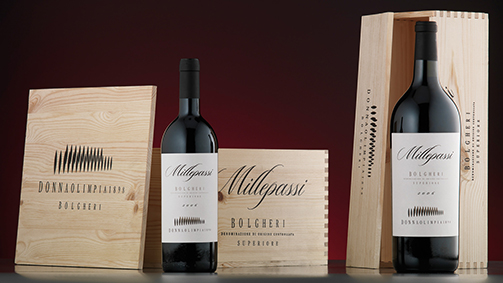
But where do you get this optimism from?
From two facts: 1, I try to help young people graduate who choose this degree course and this profession above all because of their enthusiasm, even when the business runs in the family (but then enthusiasm is the most important quality that a parent can give a child, whatever career they pursue); 2, training in the wine sector has also begun to encompass the business side, even if only in part. Where once there was a very broad technical component (excellent enologists, great viniculture experts and so forth), today, more and more, we’re training entrepreneurs, managers, men and women who put business culture right at the centre of their work.
How has investment by a company in packaging and corporate image been handled in the past, and how should it be handled?
That’s a subject very close to the question of the generational passage and in business culture generally. Allow me first to go back a bit: if we survey the history of Italian wine production businesses, we see that the first pioneers (and there were many) possessed both positive and negative aspects. Positives: enthusiasm, guts, charisma. Often these became, without thinking about it too much, the “corporate marketing” tools (the capacity of an entrepreneur to talk about himself and his story was the basis of advertising). Negatives: the company’s investment was predominately made in vines and cellars; something that was clearly needed at the start, but which required financial, mental and physical resources that stopped them from seeing over the horizon. Let me to say why the training received was mostly technical (agricultural and enological). The best schools were, without doubt, centres of agrarian or enological specialisation, and they certainly did valuable work, but they focused only on the product.
A new market oriented business approach became necessary when markets began to reach saturation point in demand (something common to all sectors), competition and high investment. This is where the discipline comes in that we call marketing, but is more properly called orientation to a market but, above all, to a consumer who makes rational choices. This is not very common, though. Many business still concentrate two thirds of their efforts on the product and only a third on the perception of that product. Research on what the consumer wants and is looking for is not that well established, in fact, it’s a world yet to be fully explored. I’m not a great believer in templates, but some objective elements can be drawn from this research. For example, there is a high degree of awareness on the part of the consumer of the aesthetics and the packaging, which is an advantage for a country like Italy, the home of expertise in design, fashion and art.
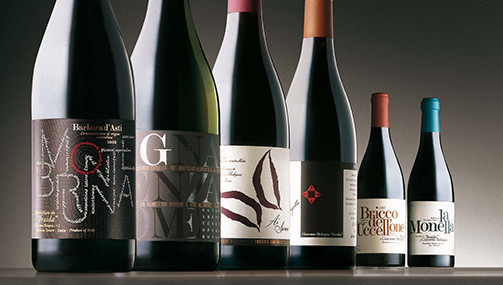
Isn’t there a paradox?
Indeed there is. This should be a real prerogative for Italy and central to the objectives of a company, but instead it has become a brake, because it’s regarded more as a cost than an investment. Nevertheless, and I’ll tell you why I believe this, the reasons for the great success in the world of Italian company brands depends mainly on the utter precision and great attention even to the smallest detail of design and aesthetics. This logic is part of the new business culture and the new generation – and this is why I am so optimistic – is very aware of it. So much so, in fact, that we might risk going too far the other way, though this may be an inevitable counterbalance to what is to come, that is transforming a business that makes a product into a business that achieves excellence, including in the way it advertises itself.
Coming back to my earlier question…
In modern advertising, the packaging and the design are important, but these aren’t limited to the simple requirements of the producer: the label, the bottle, the packaging. Advertising is moving in many different directions and these days we face great challenges (unfortunately, when one speaks of challenges, companies usually think only about the website, but it isn’t enough just to have a website, the point is how to make it tell a story in times and ways that differ from traditional advertising).
What should be done to prepare for these challenges?
The business culture can clearly be studied in universities, but it has to be broadened out to those who do it professionally, so that it becomes a constant theme in corporate life. We have seen the phase of the so-called “flying wine makers” who pinned everything on enologists, who were seen as invaluable, and indeed were much sought-after by companies. I hope they continue to be so successful, but I am convinced that, in future, it will become more and more necessary to collaborate closely with all aspects of business culture, and that includes design. Our heritage is too great to let go to waste.
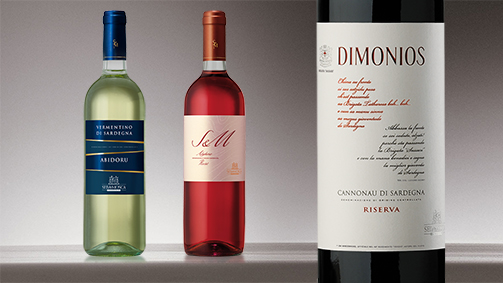
Since the beginnings of entrepreneurial production, the land, the equipment (vital in the development of the product), the people (for the training in knowledge about wine) have been fundamental. Now, though, advertising cannot be ignored, an investment that produces benefits over time. Why, then, do producers see it as almost a forced march and not a resource that is vital for the health, the vibrancy of a company?
I’m glad to be able to contradict you there, because I have had a positive experience. I’ve noted that, especially teaching the master’s degree, when I show the direct evidence of a model (let’s not forget that one of the best ways of learning is to watch others), even the most closed-minded entrepreneur is seized with enthusiasm, ready to accept the new, a renaissance, so much so that at the end of the lessons they come to me and say they can’t wait to go back to their company and put the new ideas into practice.
Another important aspect. You’ve talked about young people anxious to get started and fulfil themselves. That’s why we designers have to be able to see the objectives in advance and bring them into focus, showing the direction that the entrepreneur wants his company to take.
I don’t thing creating a look is an end in itself, something that “grabs” the young and not so young, however good a company is. There has to be a company objective. And that’s what we lecturers try to teach on page two of the company manual. It’s what we call the creation of value, which is just as valid outside the world of wine. Business “is” the creation of value: I’ve created something that before did not exist, and if I created it, it should be protected and nurtured.
In a harsh, fake, enterprise economy, value is seen as simply profit. I don’t denigrate profit, but the identification of an objective with profit is not only dated, it’s utterly inadequate. In other words, the idea that a company only grows if it grows in production, turnover, its slice of the market. Absolutely not! Not least because it may implode if growth isn’t steered, isn’t guided.

So, the main thing is value. But what is this value?
For example, I very much believe in business as a social institution, business is something that, by the value it creates, can generate benefits, a public good that is bestowed on the collectivity and manifest in many ways: paid employment, protection, the enrichment of the territory, culture that benefits everyone, respect for oneself and what one does.
This, if I might use a rather grand phrase, is the ethical value of the economy. It means the objective cannot be achieved regardless, that there are certain keystones that the consumer also acknowledges. Clarity of the objective is decisive.
What are the difficulties facing the new generation?
The most difficult thing is to identify and achieve an objective that is consistent with the ethos of the company. The new generation will find this difficult to comprehend unless they have guidance. Anything created without due calibration can become an enormous problem, not only for the designers but also for the companies themselves and, therefore, their markets. Continuous changes in direction half-way through are looked on askance by the consumer.
In a nutshell: companies are always in a state of flux. This often prompts them to rush forward and rarely spend time on reflection. But reflection on the fundamental stages on the path of growth is vitally important.
Tag Interview


